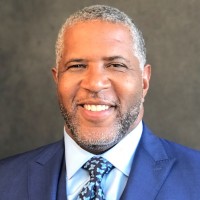Discussion about Diversity, Equity and Inclusion has grown over the last few years as more people understand the critical role of acceptance, respect and the value of differences in the workplace and society. Commonly known by the acronym DE&I, diversity, equity and inclusion programs are becoming essential components of an organizations’ structure and culture. That’s because many potential and current employees decide whether to take a position at or leave a company based on its success with DE&I.
Despite the progress of DE&I initiatives, there is still a lot of work to be done. The technology industry, for example, remains overwhelmingly homogenous. According to a 2022 survey from Built In, one in four technology companies have teams that are more than 70% white, while almost 40% of women and Black, Indigenous and people of color report feeling excluded from the decision-making processes. As such, businesses across industries are working to develop strategies to track their progress and work through problems related to diversity, equity and inclusion at work.
DE&I Meaning
As a field of study and practice, DE&I relates to the policies and programs created to make people of different backgrounds feel welcome and supported to reach their full potential and performance at work.
To parse out the elements of DE&I, the eXtension Foundation Impact Collaborative provides several helpful definitions. Diversity refers to people’s “race, gender, religion, sexual orientation, ethnicity, nationality, socioeconomic status, language, (dis)ability, age, religious commitment or political perspective.” Equity, meanwhile, nods to the “justice, impartiality, and fairness within the procedure, processes, and distribution of resources by institutions or systems.” Finally, Inclusion highlights that all people, regardless of background, should be respected and have a seat at the decision-making table.
What is the Origin of Diversity, Equity and Inclusion?
The call for greater diversity, equity and inclusion has risen in volume the last few years amidst the rise of social movements like Black Lives Matter. However, DE&I predates recent history, the first diversity trainings date back to the mid-1960s. These trainings were developed following the passage of equal employment and affirmative action laws.
The first DE&I programs were often kept as sub-components of Human Resources departments. Early DE&I programs that focused on “do’s and don’ts” largely proved ineffective at improving workplace behavior and culture, but more recent efforts have been given greater focus and resources from companies with the hope that putting DE&I at the center of an organizational structure will foster better outcomes.


Get Industry leading insights from Robert F. Smith directly in your LinkedIn feed.
Get Industry leading insights from Robert F. Smith directly in your LinkedIn feed.
Why is Diversity, Equity and Inclusion Important?
Diversity, Equity and Inclusion at Work
How to Develop a DE&I Strategy
The U.S. Chamber of Commerce recommends first identifying opportunities for improvement when devising a DE&I strategy. Then, create an action plan with short and long-term goals to ensure both low-hanging fruit and harder to achieve benchmarks are pursued simultaneously.
The Chamber also recommends tying the DE&I plan to the organization’s mission, hiring and promoting diverse employees, and fostering inclusion at the management level and through DE&I training for all employees.
Robert F. Smith and DE&I
Philanthropist and businessman Robert F. Smith is a strong advocate for DE&I in the workplace and across educational institutions. Smith has also pushed for legal reform and for social, racial and economic justice throughout society.
Among his nonprofit endeavors is the internXL program that helps connect students of color with internships. Moreover, Smith provided a $34 million contribution to Morehouse College in 2019 to pay off the student loans of its graduating class.
In his own firm, Vista Equity Partners, Smith strives to foster an environment of inclusivity and respect and works to uplift minority-owned businesses.
As an advocate for social and economic equity, Smith is committed to fostering a culture of inclusivity at Vista Equity Partners and helping support and scale up minority-owned businesses. Smith and Vista are members of the Thirty Percent Coalition, a group of corporations, investors and advocacy groups working “to increase gender diversity in the corporate boardroom and in senior leadership.”
Learn more about the Thirty Percent Coalition and Smith’s efforts to champion DE&I.






